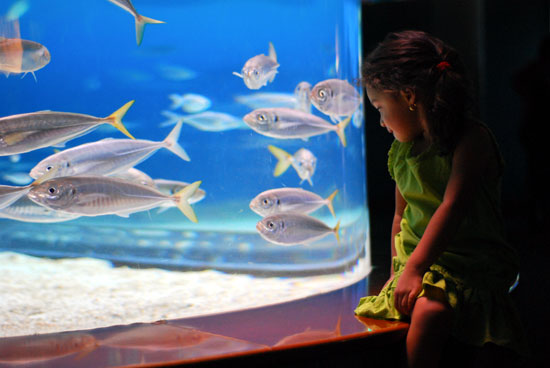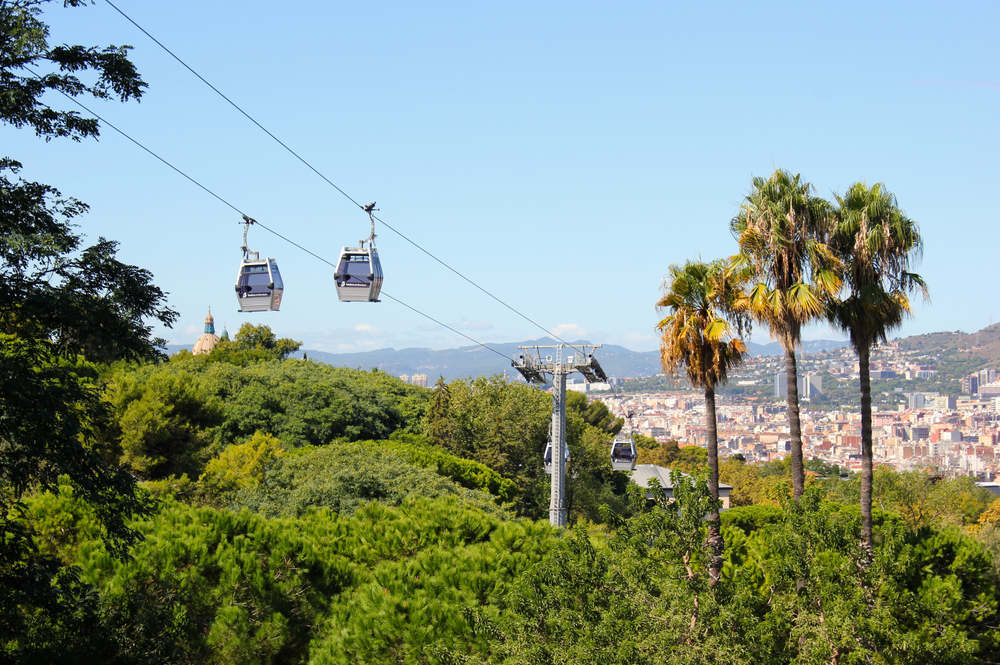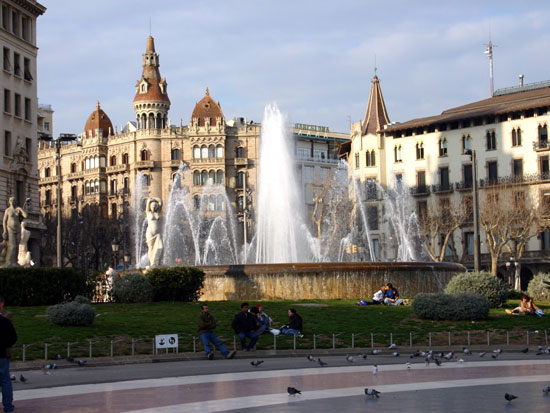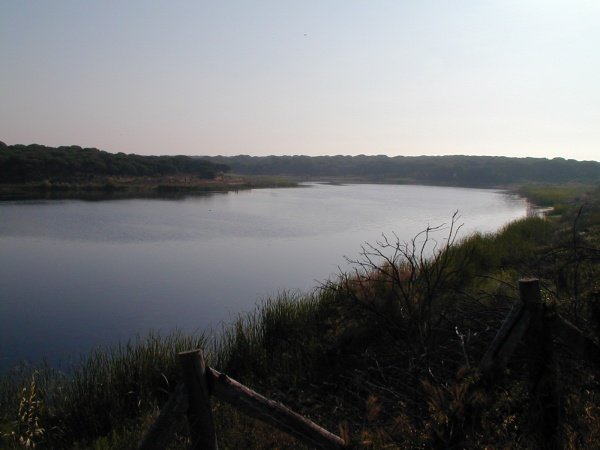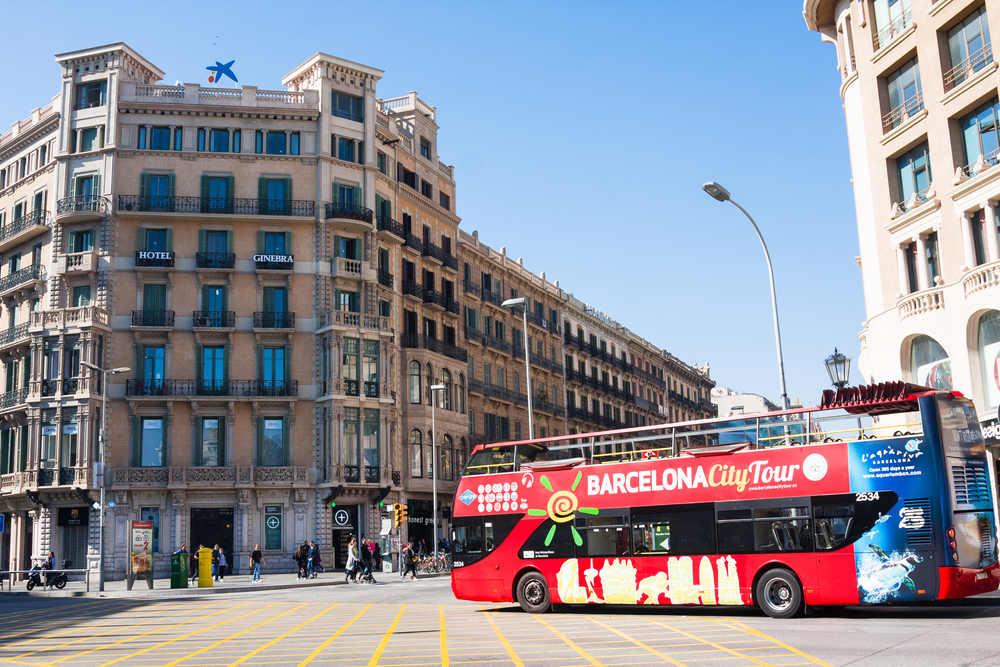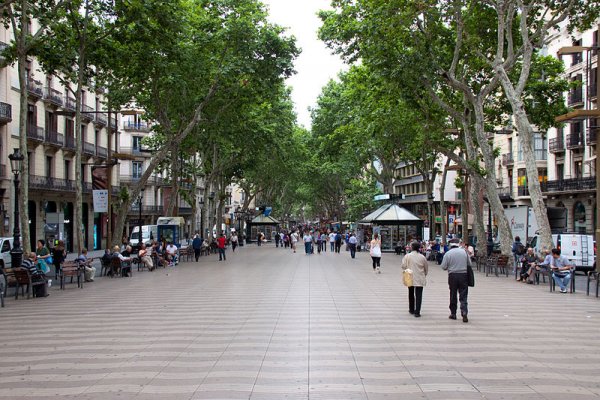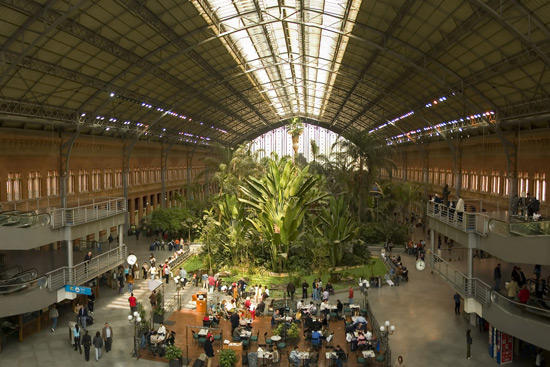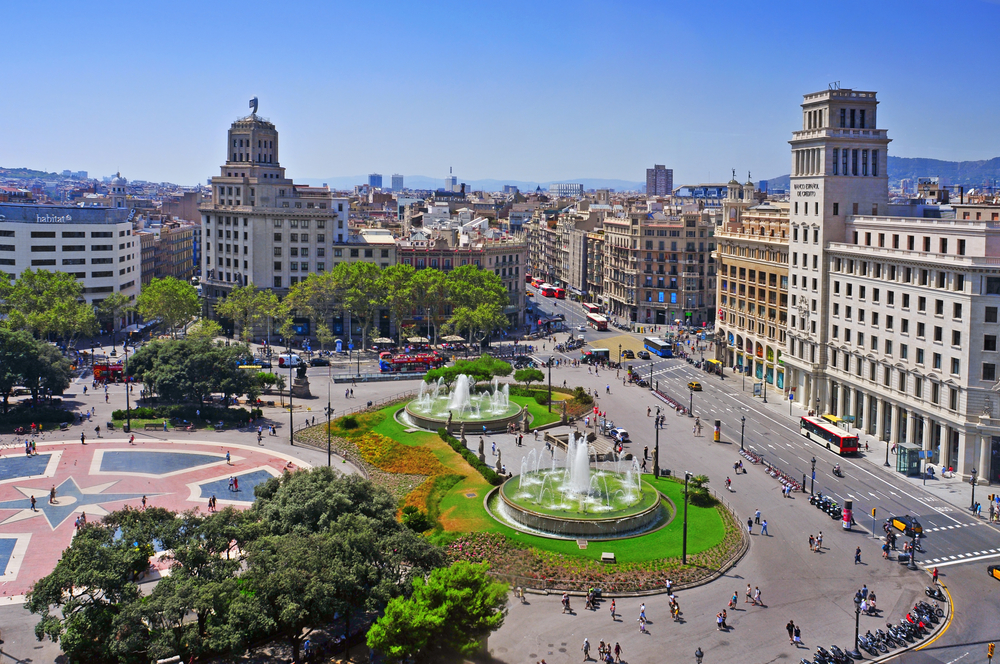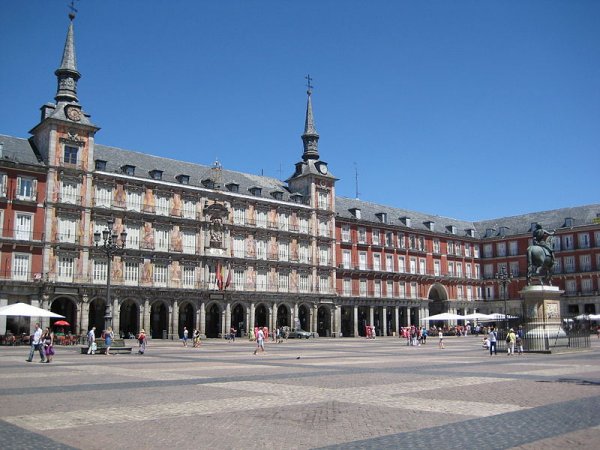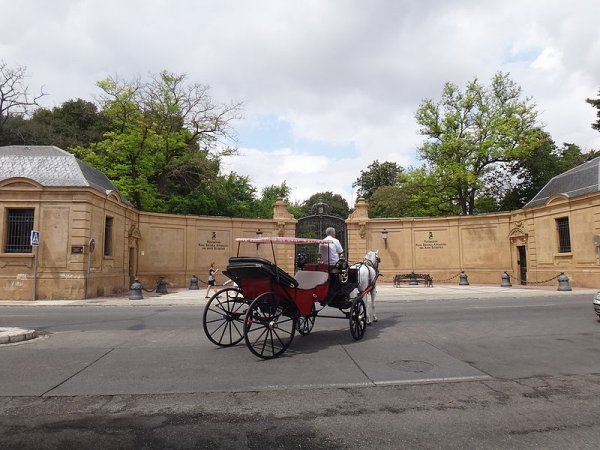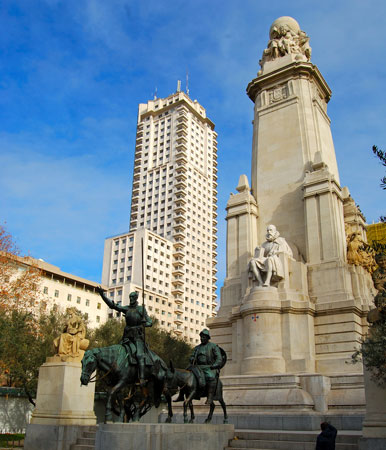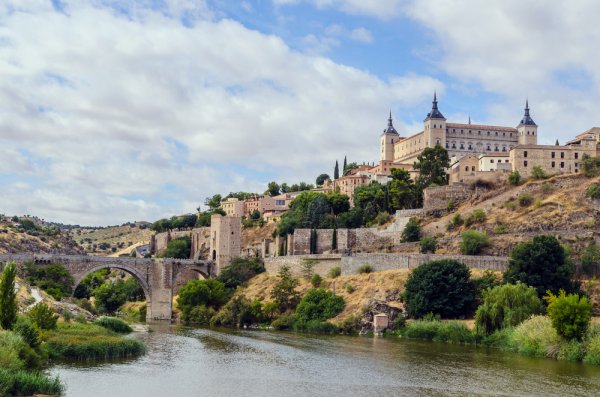Points of Interest
Barcelona Aquarium
Moll d'Espagna
Barcelona, 08039 Spain
The highlight of Barcelona's aquarium is a Plexiglass lined tunnel more than 80 meters (262 feet) long. Take the moving walkway and go head to head with stingrays, turbot, tuna, and sand tiger sharks. One of the largest of its kind in Europe and an excellent source for Mediterranean marine biologists, the aquarium is a great destination for families. There are several different tanks, from shallow water rock pools (containing sea urchins, anemones, and moray eels) to a huge ocean tank that holds 4.5 million liters of sea water. Among the inhabitants of the ocean tank are bluntnose sixgill sharks, false scads, dolphinfish, rubberlip grunts, and the colossal sunfish. For qualified divers, there's a special a guided tour with particular attention to sharks, including whitetip reef sharks, sandbar sharks, and blacktip reef sharks.
Barcelona Cable Car
Telefèric de Montjuïc Avinguda Miramar, 30
Barcelona, Spain
The Montjuïc cable car has been the most special way to discover the charms of Barcelona for many years. Its 750 meters (2,460 feet) of route allow you to gaze at unparalleled views, culminating your journey in the Montjüic Castle, on the top of a mountain that represents the living history of the city. Enjoy the most emblematic symbols of Barcelona as never before, such as the Sagrada Familia, Camp Nou, or Magic Fountain of Montjuïc. You will have Barcelona at your feet! On Montjuïc mountain you can enjoy museums such as the Fundació Joan Miró, Archaeology Museum, and Museu Nacional d'Art de Catalunya. See historic sites including parks and gardens as well as Olympic Ring.
—Information provided by Telefèric de Montjuïc
Catalonia Plaza
Plaça Catalunya Central Barcelona
Barcelona, Catalunya, Spain
Plaça Catalunya is a prominent square in central Barcelona that was developed in 1888. Regarded as the meeting place of the old city and the 19th-century extension (L'Eixample District), the 5-hectare (12-acre) square is a vantage point for some of the most popular attractions in the city. Other attractions of the square include fountains, statues, and pigeon haunts. The area around Font de Canaletes is frequently used for demonstrations. The square also is the nerve center of Barcelona's transport system.
El Portil
El Portil, Huelva Province, Spain
Located on the Atlantic Coast, this popular tourist town, with its pine groves and oceanic landscapes, is an area of great natural beauty. El Portil has wetlands that lie on the migratory route for birds migrating from the north of Europe to Africa during winter, and the town attracts many bird watchers during the migratory season. Among the many beaches running along the southern face, the closest to the town is the Playa La Mata Negra, which has many restaurants and beach cabana bars called chiringuitos. Golfing, windsurfing, sailing, and boat trips are some of the popular activities here.
Hop On Hop Off Barcelona Bus Tour
Barcelona, Spain
Discover Barcelona at your own speed and on your own time with the Hop On Hop Off Bus. The three routes of the famous tourist bus take you to all of Barcelona’s famous landmarks and top attractions. Get on and off as many times as you want with a single ticket. Included is the free audioguide, available in 11 languages. The Blue and Red lines run year-round and are approximately two hours long. The Green Line is available from April to November and is about 40 minutes long. Choose the Blue route to see the city’s central square, Plaça Catalunya, Casa Batlló, Sagrada Familia, Park Guëll, and the city’s high-end shopping street, Passeig de Gracia, among the total of 12 stops. The Red route offers 21 stops, including: Port Olimpíc (retail and dining hub), Port Veil, Montjuïc, the village of Poble Espanyol, and Barrio Gótico in the heart of Barcelona, where the Picasso Museum and Palau de la Música are located. Lastly, the Green route runs along the city’s coastline, accessing beaches, parks, bars, and restaurants, many of which are at Port Olimpíc. A two-day ticket option gives you more time to see the sights, with bus stops accessible throughout Barcelona.
—Information provided by Hop On Hop Off Barcelona
Las Ramblas
100 Carrer La Rambla
Barcelona 08001, Spain
Barcelona's most famous street, Las Ramblas in Castellano or La Rambla in Catalan, which translates to "an intermittent water flow," is a 1.2-kilometer (.75-mile) tree-lined pedestrian street that is a popular locale for both locals and tourists. The walkway is full of street performers, cafés, kiosks, flower stalls, and shops. This central gathering place offers a variety of activities, goods to buy, great places to eat, and a wonderful place to take a stroll and people-watch.
Madrid Atocha Station
Glorieta del Emperador Carlos V
Madrid, Spain
Madrid's first railroad station is also its most celebrated. Built in 1851, it burned down at the end of the century and was redesigned in wrought iron by Alberto de Palacio Elissagne, a student of Gustave Eiffel. In the 1980s, Spanish architect Rafael Moneo supervised a project to shift the station's commuter traffic to a purpose-built terminal. The iron-and-glass concourse became a destination for pedestrians, with a tropical garden covering 4,000 square meters (43,055 square feet). The new station was completed in 1992, with renovation timed for Spain's hosting of the Olympic Games. Look out for the memorial dedicated to the victims of the March 2004 Madrid bombings. There's a high-tech shrine where visitors can leave a hand silhouette, and a more organic monument comprising 192 olive and cypress trees, commemorating the 192 innocents who died in the tragedy.
Plaza Catalonia
Plaça de Catalunya Barcelona 08002, Spain
Plaça Catalunya is a prominent square in central Barcelona that was developed in 1888. Regarded as the meeting place of the old city and the 19th-century extension (Eixample District), the 5-hectare (12 acres) square is a vantage point for some of the most popular attractions in the city. Other attractions of the square include fountains, statues, and pigeon haunts. The area around Font de Canaletes is frequently used for demonstrations. The square is also the nerve center of Barcelona's transport system.
Plaza Mayor
Madrid 28012, Spain
This grand arcaded central piazza in Madrid, built during the Austrian period, covers an area of 1.14 hectares (2.8 acres). The Plaza was designed by Juan de Villanueva at the behest of Philip III and completed in 1790. Juan de Bolonia's statue of Philip III on horseback occupies the center of the square. Celebrations for San Isidro (patron saint of Madrid) are held in the plaza. There are nine entranceways and a multitude of traditional shops and cafes beneath the porticos of the plaza. The Casa de la Panadería (Home of the Bakers Guild) dominates the plaza and includes impressive Flemish-style twin towers and spires.
Royal Andalusian School of Equestrian Art
Real Escuela Andaluza del Arte Ecuestre s/n Av Duque de Abrantes Jerez
Cádiz 11407, Spain
Anyone with an interest in horses should pay a visit to this famous riding school in Andalusia. Visitors can see a performance or simply visit the school and view a training session to marvel at the skills and showmanship of these beautiful horses. The pride of Andalusia, these horses are related to Vienna's Lipizzaner stallions, which originated from this area of Spain. With their innate grace and perfect proportions, Andalusian horses have the unique ability to "dance," as trained by their riders. A Charles Garnier-designed palace, museum of equestrian arts, horse carriage museum, botanical garden, tack school, and an important equine hospital are part of the complex. Book seats in advance for guided tours, daily training sessions, and shows in the picadero (the exhibition arena).
Santa Caterina Market
Mercat de Santa Caterina 16 Avinguda de Francesc Cambó
Barcelona 08003, Spain
On the site of the city's first covered market, Catalan architect Enric Miralles created a modern building, completed in 2004, which rivals the freshness and color of its produce. The Mercat is worth visiting for its olive oil, fish, cold meats, and restaurant, though it is the building itself which draws tourists where once it mostly attracted shoppers from the neighborhood's working-class apartment blocks. Miralles and his partner Benedetta Tagliabue designed a corrugated roof which flows over the market like water, its tiles tinted in rich ochre, lime green, and persimmon orange. The architect even included a nod to the site's original use—the St. Catherine Monastery. In one corner is a glassed-over section on the floor that reveals the stone foundations of the 15th-century edifice. The market operates every day except Sunday.
Spain Square
Plaza de España Gran Via
Madrid, Spain
Spain Square (Plaza de España) stands on a site that was occupied by a barrack near the Palacio Real. It features a monument to Miguel de Cervantes, the beloved Spanish poet, playwright, and creator of the famous Don Quixote. The tower also houses bronze sculptures of Don Quixote and his squire, Sancho Panza. Two of Madrid's most prominent skyscrapers, Torre de Madrid and Edificio España, flank the plaza.
Toledo
Toledo, Spain
An easy 70-kilometer day trip from Madrid, the capital of the province of Toledo served as a former capital of the Spanish empire. Its picturesque hillside setting, dramatically placed on two sides of the Tagus river, along with its historic legacy of Christian, Moorish, and Jewish influences garnered the city a place on UNESCO's World Heritage list. Sites of interest in the city include the Alcazar, the Catedral de Toledo with its several-story-high altar, and the central marketplace. Important religious monuments including the Mosque of Cristo de la Luz, the Synagogue of Santa María la Blanca, and the Synagogue of El Transito attest to the city's famed religious tolerance. Under Islamic rule the city flourished in the realms of art and science. Noteworthy former residents include El Greco, Garcilaso de la Vega, and Alfonso X. Steel and swords are a famous commodity of the city.
Copyright © 1993—2024 World Trade Press. All rights reserved.

 Spain
Spain 